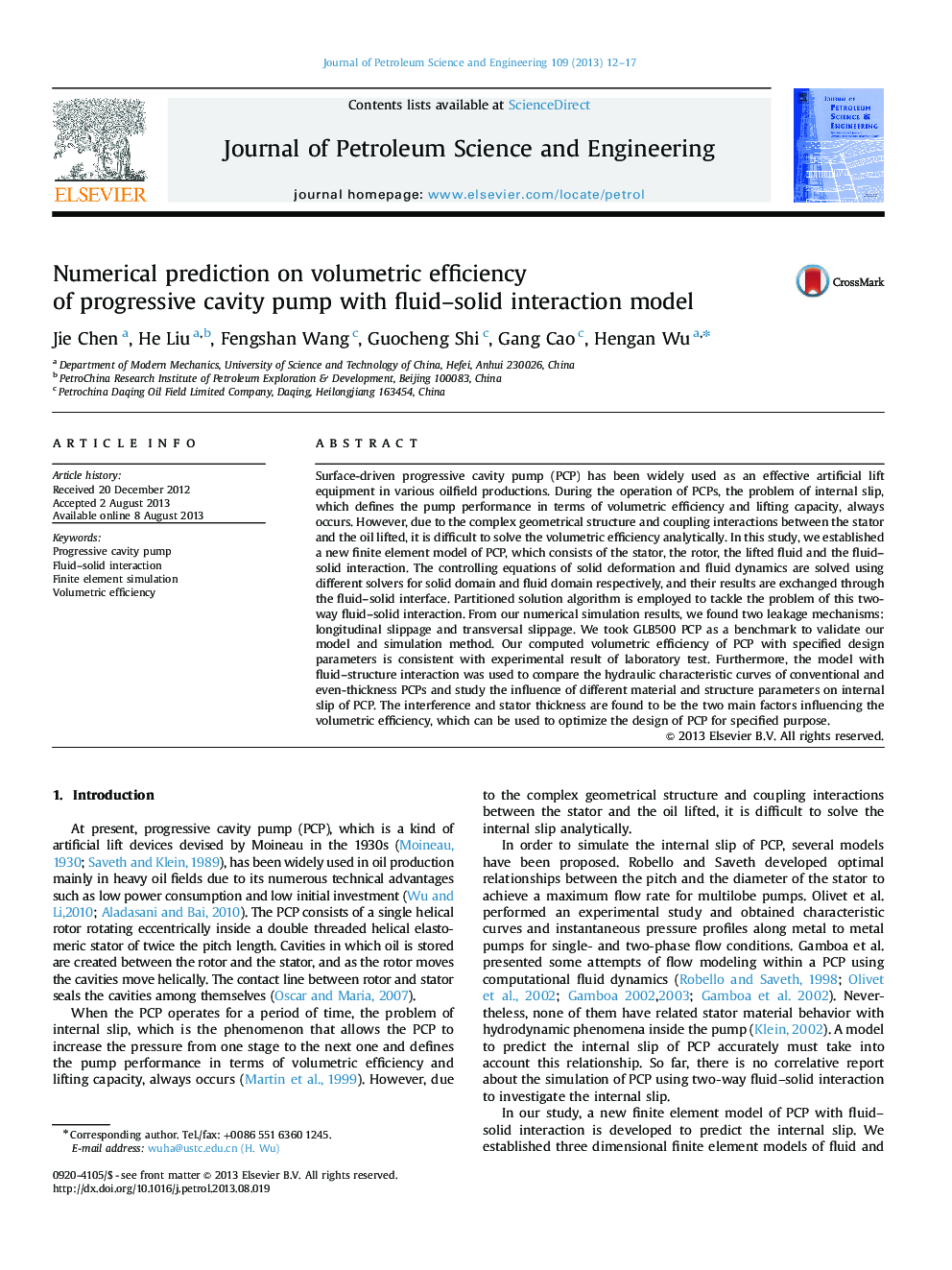| Article ID | Journal | Published Year | Pages | File Type |
|---|---|---|---|---|
| 1755250 | Journal of Petroleum Science and Engineering | 2013 | 6 Pages |
•A FEA model of PCP with fluid–solid interaction is presented and validated.•Two leakage mechanisms are clarified as longitudinal and transversal slippage.•The volumetric efficiency of PCP can be theoretically predicted via fluid leakage.•The volumetric efficiency of even-thickness PCP is higher.•The interference and stator thickness are two dominant factors.
Surface-driven progressive cavity pump (PCP) has been widely used as an effective artificial lift equipment in various oilfield productions. During the operation of PCPs, the problem of internal slip, which defines the pump performance in terms of volumetric efficiency and lifting capacity, always occurs. However, due to the complex geometrical structure and coupling interactions between the stator and the oil lifted, it is difficult to solve the volumetric efficiency analytically. In this study, we established a new finite element model of PCP, which consists of the stator, the rotor, the lifted fluid and the fluid–solid interaction. The controlling equations of solid deformation and fluid dynamics are solved using different solvers for solid domain and fluid domain respectively, and their results are exchanged through the fluid–solid interface. Partitioned solution algorithm is employed to tackle the problem of this two-way fluid–solid interaction. From our numerical simulation results, we found two leakage mechanisms: longitudinal slippage and transversal slippage. We took GLB500 PCP as a benchmark to validate our model and simulation method. Our computed volumetric efficiency of PCP with specified design parameters is consistent with experimental result of laboratory test. Furthermore, the model with fluid–structure interaction was used to compare the hydraulic characteristic curves of conventional and even-thickness PCPs and study the influence of different material and structure parameters on internal slip of PCP. The interference and stator thickness are found to be the two main factors influencing the volumetric efficiency, which can be used to optimize the design of PCP for specified purpose.
